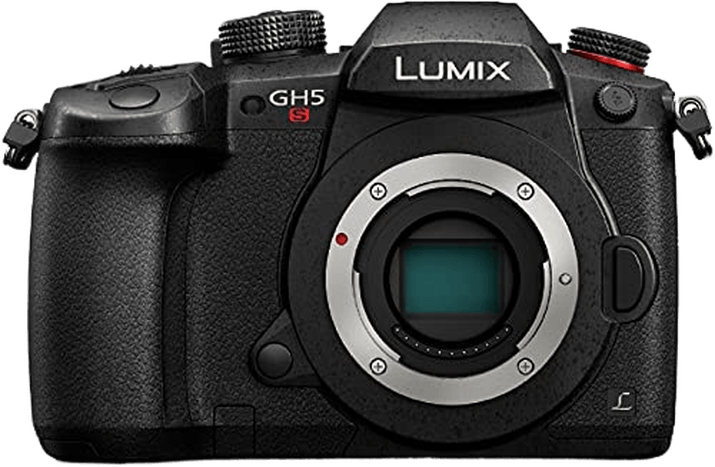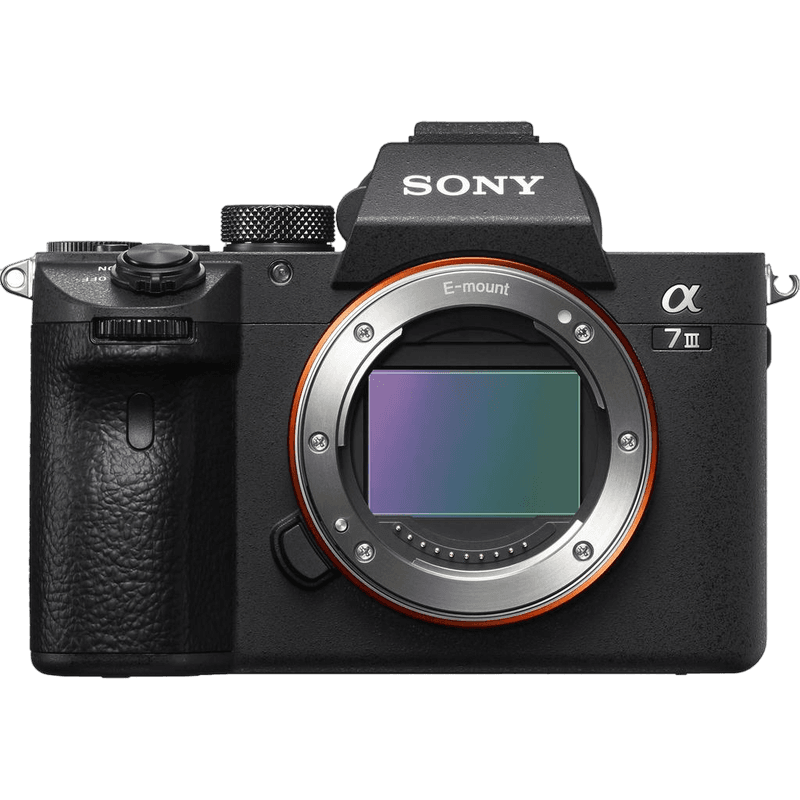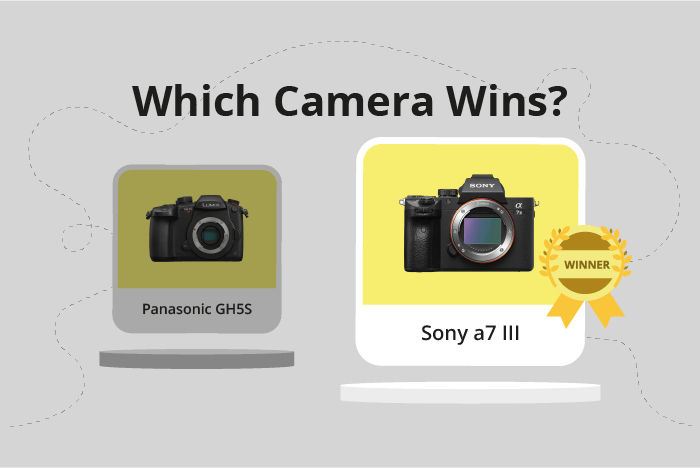Panasonic Lumix GH5S vs Sony a7 III Comparison
Panasonic Lumix GH5S

Sony a7 III

The Sony a7 III outperforms the Panasonic Lumix GH5S with a score of 80/100 compared to 62/100. Both cameras are mirrorless and were released within a year of each other. They share similar dimensions and weight, with the GH5S being slightly larger and heavier. The Sony a7 III’s superior score is due to its better specifications and a lower launch price of $2000 versus the GH5S’s $2500.
The Panasonic Lumix GH5S, however, has its strengths, such as being released earlier in 2017. Ultimately, the Sony a7 III is the better camera, offering more advanced features at a more affordable price, making it the winner in this comparison.
Panasonic Lumix GH5S vs Sony a7 III Overview and Optics
The Sony a7 III outperforms the Panasonic Lumix GH5S in optics with a score of 81/100, a 28-point lead over the GH5S’s 53/100. Both cameras share similarities, such as CMOS sensor types and processors. However, the Sony a7 III excels in several aspects, while the Panasonic Lumix GH5S has its own advantages.
The Sony a7 III has a higher megapixel count at 24.2, compared to the GH5S’s 10 megapixels. This difference allows the Sony a7 III to capture more detail in images. The a7 III also has a better DXOMARK sensor score of 96, significantly higher than the GH5S’s 74. This higher score results from the Sony a7 III’s full-frame sensor size, which is larger than the GH5S’s Micro Four Thirds sensor. The Sony a7 III also features image stabilization, which the GH5S lacks. This advantage helps reduce camera shake and improve image quality.
On the other hand, the Panasonic Lumix GH5S has a faster shooting speed of 12, compared to the Sony a7 III’s 10. This advantage allows the GH5S to capture more frames per second, which can be beneficial for action shots and fast-moving subjects.
Each camera has its strengths and weaknesses. The Sony a7 III is superior in image quality, sensor performance, and stabilization. In contrast, the Panasonic Lumix GH5S offers a faster shooting speed. Ultimately, the choice between these cameras depends on individual preferences and shooting requirements. The Sony a7 III is better suited for those seeking higher image quality, while the GH5S caters to those who prioritize speed.
Panasonic Lumix GH5S vs Sony a7 III Video Performance
The Panasonic Lumix GH5S outperforms the Sony a7 III in video capabilities with a video score of 69/100 compared to the Sony a7 III’s 56/100. Both cameras share some common specifications, such as having a maximum video resolution of 4K and not having built-in time-lapse functionality.
The Panasonic Lumix GH5S surpasses the Sony a7 III in terms of maximum video dimensions, offering 4096 x 2160 pixels while the Sony a7 III provides 3840 x 2160 pixels. This difference results in the GH5S delivering larger and more detailed video output. Furthermore, the GH5S has a higher maximum video frame rate of 60fps, which is twice the 30fps offered by the Sony a7 III. This advantage allows the GH5S to capture smoother and more fluid motion in videos, particularly in fast-moving scenes.
On the other hand, the Sony a7 III does not have any distinct advantages over the Panasonic Lumix GH5S in terms of video capabilities. Both cameras lack built-in time-lapse functionality, and the a7 III’s video specifications are generally lower than those of the GH5S.
Considering these factors, the Panasonic Lumix GH5S proves to be a superior choice for videographers seeking higher video quality and smoother motion capture. The Sony a7 III, while still a capable camera, falls short in comparison to the GH5S in terms of video performance.
Panasonic Lumix GH5S vs Sony a7 III Features and Benefits
The Panasonic Lumix GH5S outperforms the Sony a7 III in terms of features, scoring 87 out of 100, while the Sony a7 III scores 81. Both cameras share several specifications, including a touchscreen, a flip screen, WIFI, and Bluetooth connectivity. Neither camera has GPS functionality.
The Lumix GH5S excels with its larger screen size of 3.2 inches, compared to the Sony a7 III’s 3-inch screen. The GH5S also boasts a higher screen resolution, with 1,620,000 dots, whereas the a7 III has a lower resolution of 921,600 dots. The larger screen and better resolution of the GH5S provide users with a clearer and more detailed view during shooting and playback.
The Sony a7 III does not have any notable advantages over the Panasonic Lumix GH5S in terms of features, as both cameras share most specifications. The lower score of the a7 III indicates that it falls short in comparison to the GH5S in this aspect.
Considering the feature scores and specifications, the Panasonic Lumix GH5S is the superior camera in this comparison. Its larger screen size and higher resolution make it a better choice for users who prioritize these aspects. While the Sony a7 III shares many features with the GH5S, it lacks any standout advantages to surpass the GH5S’s higher score.
Panasonic Lumix GH5S vs Sony a7 III Storage and Battery
The Sony a7 III wins the storage and battery comparison with a score of 68/100, while the Panasonic Lumix GH5S scores 57/100. Both cameras share common specifications, such as having two memory card slots and no USB charging. They also accept SD/SDHC/SDXC memory cards, but the Sony a7 III additionally supports Memory Stick Duo/Pro Duo/Pro-HG Duo cards.
The Sony a7 III’s advantage lies in its longer battery life, with 750 shots compared to the Panasonic GH5S’s 440 shots. This makes the Sony a7 III more suitable for extended shooting sessions. The Panasonic GH5S, however, does not have any specific advantages in storage and battery.
Given these points, the Sony a7 III is the better choice for photographers who require longer battery life and additional memory card compatibility. The Panasonic GH5S falls short in this aspect, making the Sony a7 III the clear winner in the storage and battery comparison.
Panasonic Lumix GH5S vs Sony a7 III – Our Verdict
Are you still undecided about which camera is right for you? Have a look at these popular comparisons that feature the Panasonic Lumix GH5S or the Sony a7 III:

